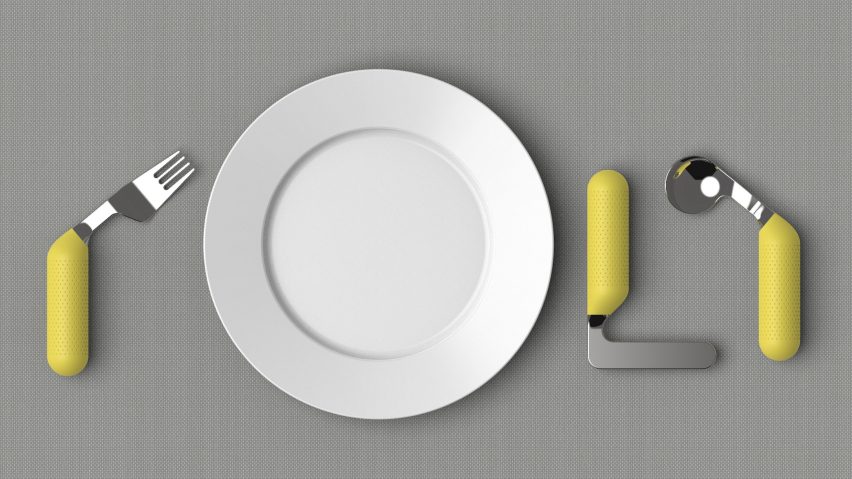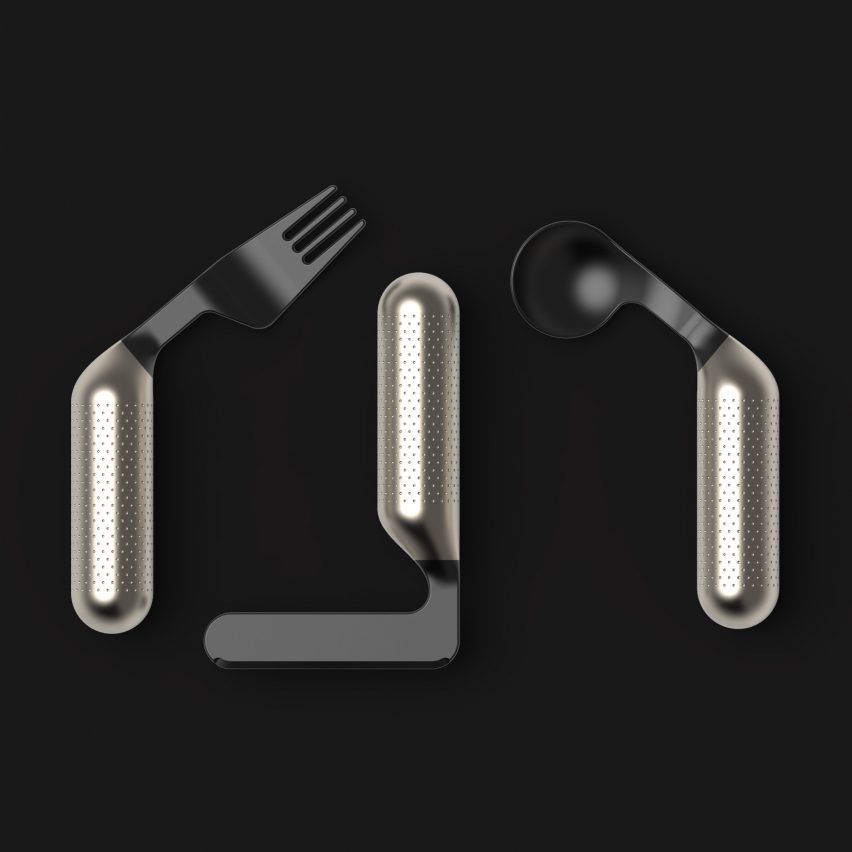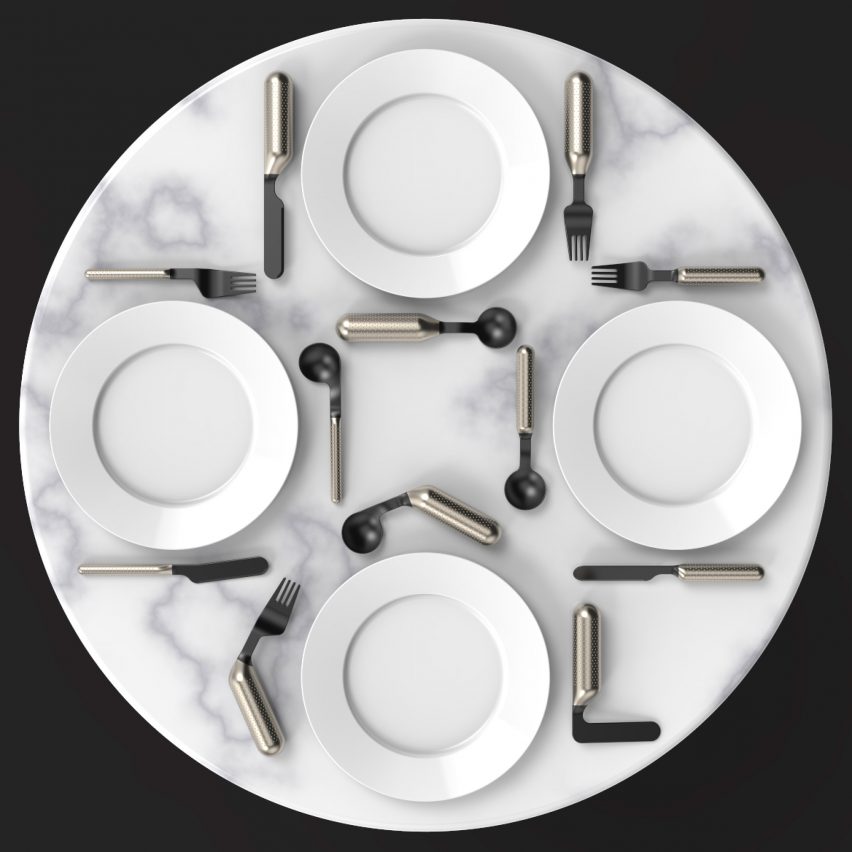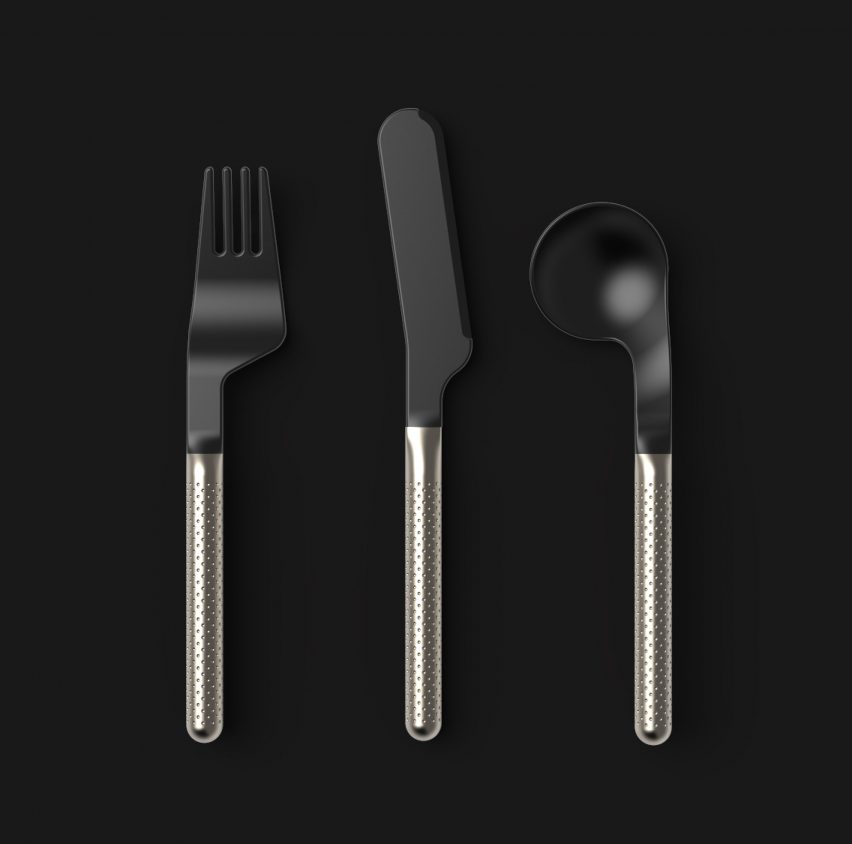
Font adaptive cutlery collection combines aesthetics and accessibility
Australian studio Hop Design has used 3D printing to create a cutlery set called Font that can be tailored to people with different disabilities while maintaining a strong and cohesive aesthetic.
Named for its typography-like appearance, the Font cutlery collection, which has been shortlisted in the homeware design category of Dezeen Awards 2022, comes in 24 distinct sets and could potentially also be developed for custom order.
Hop Design founder Michael Hoppe created the cutlery with the idea of making everyone feel included around the dinner table.

"Cutlery solutions for people with disabilities can be orthopaedic looking and create a sense of 'other' when sitting next to regular cutlery," said Hoppe. "We aim to change that."
The minimalistic cutlery features exaggeratedly rounded shapes on the handles, knife blade, spoon bowl and fork kneck. These characteristics make it look like a united collection, even given all of the other variations.
Some elements that commonly change across the collection are the thickness of the handles and the angles between the handles and eating implements.

Hoppe designed the sets to cater for people with all different levels of hand strength, dexterity and control — capacities which may be diminished by age, injury, arthritis or congenital issues, among other reasons.
Since there is no one-size-fits-all solution that would be adequate for this wide range of needs, Hoppe used 3D-printing to make highly specialised and customisable options, working in consultation with end users and occupational therapists.
The handles are 3D-printed in polyamide and the metal parts in stainless steel. The colours and finishes can be easily varied.
"I wanted a simple aesthetic to make it easy to create a visual family while still allowing for a lot of variation in form," Hoppe told Dezeen.
"Everyone has a favourite spoon or cup that they use all the time. There is a lot of potential for leveraging aesthetics in inclusive design and design for people with disabilities."

Hoppe's next goal is to enable customers to design their own custom implements, either by tweaking one of the existing models or working with the studio to create a new variation that goes into the database.
For modifying existing designs, he intends to have an app through which people can adjust the dimensions of a parametric model before ordering them.
"Most users will have a set up that they are comfortable with and can be a starting point," he said.
Other recent adaptive designs have come from Microsoft, which recently released a range of computer accessories for people with limited mobility or visual impairments, and Kim Kardashian, whose SKIMS shapewear comes with accessible features.